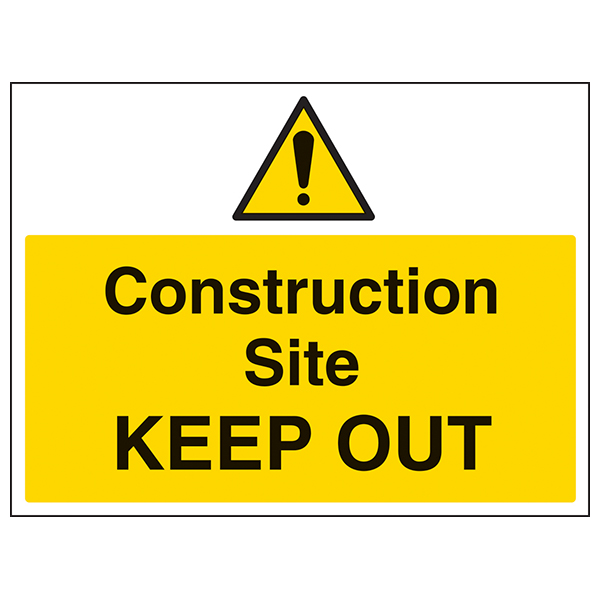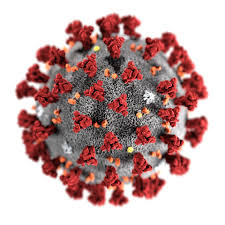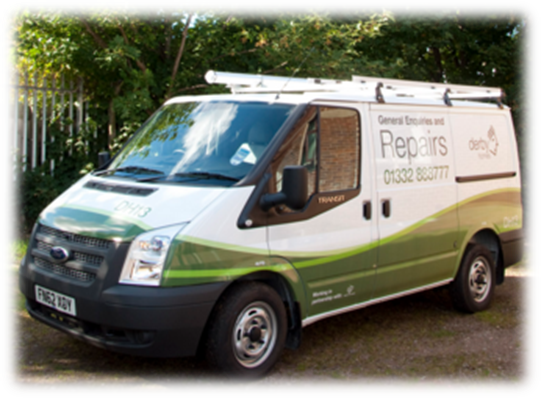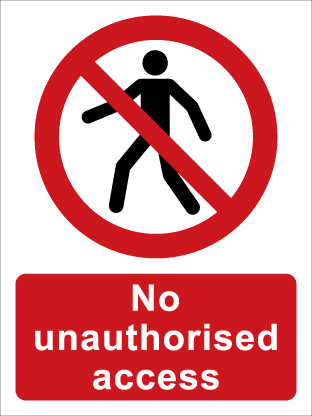Information
-
Site conducted
-
Audit Title
-
Document No.
-
Client / Site
-
Conducted on
-
Prepared by
-
Location
-
Personnel
Previous Audit Report
-
Have all previous issues been cleared?
Access and Egress
-
Is there safe access and egress to all working areas of the site?
-
Have pedestrian walkways been provided to protect them from moving vehicles?
-
Are walkways free from obstructions and stored materials?
-
Are access routes adequatelly lit?
Access - External
-
Are site access points clearly signposted on the approaches to the site.
-
Is there adequate external signage?
-
Are the approaches to the site are kept clear of site traffic?
-
Are major deliveries timed so as to avoid school drop-off and pick-up times and other rush hour times?
-
If necessary has the use of traffic lights to control traffic around site entrances been considered?
-
Are approach roads kept clean and tidy and is any debris removed promptly?
-
Is there safe pedestrian access across all site entrances?
-
Where work at height is carried out adjacent to the public highway/footpath; are protective fans or other measures provided to safeguard members of the public?
-
Are the following carried out at the end of each day/shift ;<br><br>tools, plant and equipment secured; remove or board ladders to restrict access; cover and fence excavations; store and secure hazardous materials/substances; ensure materials are properly stacked and choked.
-
Are all public access routes kept clean and clear at all times?
-
Is there adequate signage to direct members of the public?
Security
-
Are the public fenced off or otherwise protected from the work?
-
Is out of hours security required and in place?
-
Is the site enclosed and secure?
-
Are site security arrangements adequate?
Housekeeping
-
Are waste bins/skips clearly identifiable?
-
Are skips enclosed and secured if the site is not active?
-
Is debris and waste removed from the work area upon completion of the work or at the end of each shift?
-
Ensure debris is not be allowed to collect around the site.
-
Are materials stored in an appropriate manner so as not to cause damage to or a weakening of the material?
-
Are damaged materials segregated to prevent them being used?
-
Are all pipes, tubes, etc. securely wedged or choked to prevent accidental movement?
-
Are all hazardous/flammable liquids contained within a suitable storage container?
Site Set up
-
Are the following items displayed in a prominent position e.g. canteen, site office etc...?
-
Up to date copy of the F10?
-
Company Insurance Policy?
-
Site Fire Plan?
-
Site Safety Rules?
-
Emergency Plan and Contact Numbers?
-
Signs for the Office/Cabin?
-
First Aid Location Signs?
-
Assembly Point Signs?
-
No Smoking Signs?
-
Health & Safety Law Poser?
-
Are the following items available on site?
-
Latest H&S Policy?
-
Construction Phase Plan?
Welfare Facilities
-
Is a facility available to change and dry clothing?
-
Are their facilities available where workers can rest, make hot drinks and prepare food?
-
Are the welfare facilities a sufficient size for the number of employees on site and are they adequately heated?
-
Is access to the welfare facilities accessible to all persons on the site?
-
Is there a supply of wholesome drinking water and are cups provided?
-
Are all drinking water supplies appropriately signed where necessary?
-
Are sufficient toilets readily available, maintained, kept clean & properly lit?
-
Note - A connection with mains drainage is always preferable to that of a chemical toilet.
-
Are toilets connected to the main sewer?
-
Are there washbasins, hot and cold running water, soap and towels?<br>
-
Are the washbasins large enough to wash up to the elbow and are they kept clean?<br>
-
Where the nature of the work demands it, showers shall be provided.
-
Are showers provided?
-
Are the welfare facilities cleaned on a regular basis (no less than once a week)?
First Aid
-
Is there a sufficient number of first aiders available? This is dependent on the type of work being undertaken, the number of workers on site and any special or unusual hazards (at least one first-aider for between 5-50 employees on site)
-
Are additional suitably qualified persons available to ensure adequate first aid provision is provided?
-
Is an appointed person designated for this site?
-
Are the names of first aiders detailed on the site notice board?
-
Does the first aid kit contain only first aid materials?
-
Is the location of the first aid box clearly indicated on the site notice board and the door of the room in which it is contained?
-
The First Aid box should be;
-
Marked with a white cross on a green background.
-
Be placed where it can be seen and used.
-
Be checked and replenished on a regular basis.
-
Are new staff made aware of its location as part of their induction?
Induction
-
Are site safety inductions being adequately carried out both for everyone working on and visiting the site?
Management Controls
-
Are all persons familiar with the requirements of the site safety rules and that they must be complied with on site?
-
Are Toolbox Talks being carried out?
-
Have existing services e.g. electricity cables, gas mains, etc. been identified and have effective steps been taken to prevent contact with them?
-
Have all contractors been provided with information relating to Health & Safety for the work they are undertaking?
-
Is adequate supervision provided for all activities on the site paying particular attention to work activities being undertaken by young persons and/or those which are high risk activities?
Traffic Management
-
Has a traffic management plan been prepared?
-
Are traffic management arrangements suitable and sufficient?
-
Are the arrangements being followed by personnel working and visiting site?
-
Does the site layout match the plan?
-
Are storage areas identified?
-
Are loading areas identified?
-
Have one way or turning points been identified where necessary?
Risk Assessments and Method Statements
-
Have all Risk Assessments and Method Statements have been prepared by a competent person and have they been checked, reviewed and signed?
-
Are Risk Assessments adequate and suitable for the task?
-
Does the Risk Assessment offer the necessary controls and required level of protection?
-
Are Method Statements adequate and suitable for the task?
-
Does the Method Statement offer the necessary controls and required level of protection?
-
Are all contractors and personnel working in accordance with their appropriate RAMS?
-
Have all workers signed to confirm they have read, understood and will work to their appropriate RAMS?
Permits to Work
-
Hot Works - Hot Works include; welding, oxy-acetylene cutting, use of angle grinders/disc cutters, etc.
-
Have Hot Work Permits been checked and reviewed and are they valid for the work conditions?
-
Are suitable and sufficient fire prevention measures in place? Including the removal of all combustible materials, the use of fire blankets and fire extinguishers.
-
Have old permits been cancelled and closed?
-
Dig - Digging includes; excavations, knocking in pins, breaking ground etc.
-
Have permits to dig been prepared and issued where the excavations are complex, hazardous or impact on the work or operations of another?
-
Have all permits to dig been checked and reviewed prior to issue to ensure the appropriate controls have been included?
-
Are all contractors working in accordance with permits to dig?
-
Is the permit valid?
-
Have old permits been cancelled and closed?
Fire Risks and Management
-
Is there a fire risk assessment in place?
-
Are weekly fire checks being carried out and records kept in the site folder?
-
Are there emergency procedures for evacuating the site in case of a fire, flood, explosion etc?
-
Do all staff know what these procedures are and do they form part of the site induction?
-
Is there an adequate means of raising the alarm, and it is regularly tested?
-
Are there adequate escape routes and are they kept clear of obstructions?
-
Is the quantity of flammable materials, liquids and gases kept to a minimum and are they adequately stored?
-
Is smoking and other ignition sources banned in areas where gases or flammable liquids are stored or used?
-
Is flammable and combustible waste removed regularly and stored in suitable bins and skips?
-
Are suitable fire extinguishers provided and are they maintained and in a good condition?
-
Have all fire extinguishers had an annual inspection?
Registers and Records
-
Are there site inspection records for items such as scaffolding, excavations, coffer dams, plant and other equipment and have they been completed in a timely fashion?
Consultation
-
Has a system been established for employees and workers to comment on and be consulted on health, safety and welfare issues?
Personal Protective Equipment (PPE)
-
PPE General Requirements - Ensure PPE compatibility issues have been considered and that one piece of PPE does not restrict the effectiveness of another piece of PPE.
-
Is PPE issued on an individual basis?
-
Is PPE appropriately replaced?
-
Are all staff and visitors wearing Hi-Viz vests or jackets?
-
Eye Protection
-
Is it suitable for the type of work being undertaken, i.e. light protection or full goggle, etc?
-
Is it in good condition?
-
Foot Protection
-
Are safety boots being worn and are they suitable for the work activity being undertaken?
-
Is the footwear in good condition, still offering an adequate level of protection to the wearer?
-
Hand Protection - Ensure that where damage to the hands may occur through activities such as handling, or when using hazardous substances/chemicals that all persons affected wear the appropriate class of safety glove.
-
Are gloves being worn in accordance with the work activity and specific RAMS?
-
Are all gloves free from damage and the correct size?
-
Hearing Protection
-
Is the correct type of protection being used for the work activity being carried out?
-
Where ear plugs are in used. Are they the correct size ear plugs?
-
Is all hearing protection equipment kept clean and checked regularly for damage?
-
Respiratory Protection Equipment (RPE)
-
Is the correct type of respiratory equipment being used for the works being undertaken?
-
Has a face fit test been done for the worker wearing the RPE?
-
Is all RPE kept clean and checked after use?
-
Safety Helmets
-
Are all staff and visitors wearing safety helmets?
-
Were all helmets found free from damage?
-
Are helmets being worn correctly?
Plant & Equipment
-
Are tools and equipment being stored correctly to avoid damage to the equipment and persons?
-
Are dry, covered and secure storage areas provided for all tools and equipment?
-
Hand tools
-
Are the right tools and equipment being used for the right job?
-
Are all hand tools in good condition with no defects?
-
Power Tools
-
Are all dangerous parts guarded e.g. gears, chain, drives, projecting engine shafts, etc?
-
Are guards secure and in good condition?
-
Are tools in a good state of repair and do they carry the appropriate safety symbol e.g. BS kite mark, CE Mark etc?
-
Are safety devices operating properly and are all cables double insulated?
-
Are all workers competent persons for the tools/equipment they are using?
-
Plant
-
Is all Plant and Machinery inspected on a weekly basis by a competent person and are these inspections recorded in a Plant Inspection Register?
-
Are all plant operators trained and do they hold a valid plant operators card for the categories being operated?
Electrical Equipment
-
Where practicable, are the necessary utility services provided on site before work begins?
-
Are low voltage tools and equipment being used wherever possible?
-
Are only 110v tools being used?
-
Are cables and leads protected from damage?
-
Are tools and equipment visually checked and regularly inspected/tested by a competent person. (PAT)?
-
Are cables and trailing leads secured so as not to cause a trip hazard?
-
Have all temporary supplies been effectively bonded to earth?
-
Has suitable and sufficient task lighting been provided to enable workers to safely carry out their work?
Cartridge Operated Tools
-
Are the manufactures instructions being followed?
-
Is the operator/s competent to use the tool?
-
Are the operator/s wearing suitable eye protection?
-
Is the gun maintained regularly?
-
Are the gun cartridges keep secure when not in use?
Lasers
-
Is there a risk assessment in place for the use of lasers?
-
Are operators competent to use the lasers?
-
Are areas where lasers are used defined and clearly marked?
-
Are lasers Class 1 or 2?
-
Is the correct eye protection being used?
-
Are the beams away from other workers, public areas and roads?
Control of Substances Hazardous to Health (COSHH)
-
Have COSHH Assessments been carried out for all potentially hazardous materials and substances being used on the site?
-
Are material safety data sheets available to assist with COSHH assessments?
-
Have the hazards associated with the use of such materials been properly communicated to those affected?
-
Are all dangerous/hazardous materials/substances clearly marked/identified and stored in a secure location appropriate to the substance?
-
Have the appropriate control systems and PPE been provided?
Construction Dust
-
Is the creation of construction dust being eliminated or reduced where possible?
-
Are dust creating work areas isolated from other workers/visitors/members of the public?
-
Is the necessary tools and/or equipment being used during dust creating activities and is it being used in accordance with manufacturer instructions?
-
Is all construction dust removed following the completion of the work activity?
Storage of Substances, Chemicals and Oils.
-
Are Substances, Chemicals and Oils stored in the correct manner?
-
Are all bowsers locked?
-
Were any/all drums stored off bear ground?
-
Is static plant fitted with drip trays?
-
Is plant and equipment in good order and free from leaks etc?
Occupational Health, Hand Arm Vibration (HAV), Noise and Associated Health Risks
-
Has exposure to HAV been reduced as much as possible by selecting suitable work methods, tools, plant, etc?
-
Are reduced-vibration tools used wherever possible?
-
Are vibration tools properly maintained?
-
Is the exposure to vibration limited for persons exposed to HAV by ensuring that no person uses vibrating tools for longer than the manufactures guided times?
-
Noise - As a general rule - if you have to shout to be heard at a distance of 2m, the noise level is approx 85dB and you should consider wearing hearing protection.
-
- if you have to shout to be heard at a distance of 1m, the noise level is approx 90dB and you should definitely wear hearing protection.
-
Have noise levels been reduced by using different working methods or selecting quieter plant e.g. by fitting breakers and other plant or machinery with silencers?
-
Are people not involved in the work kept away from the source of the noise?
Excavations/Earthworks
-
Are checks made to determine the presence of any buried services before and during all excavation works?
-
Are excavations carried out in accordance with a method statement and where their is a need for one, a permit to dig?
-
Is there adequate support and propping for the excavation, or has been sloped or battered back to a safe angle?
-
Is there a safe method used for placing supports, without the need for operatives to work in an unsupported trench?
-
Is there safe access into the excavation, i.e. a sufficiently long and secured ladder?
-
Are there barriers or other protection in place to stop people/vehicles falling in?
-
Where excavations effect the stability of neighbouring structures, have the appropriate control measures been put in place and are they being followed?
-
Are materials, spoil and plant stored away from the edge of the excavation to reduce the chance of collapse?
-
Is the excavation regularly inspected by a competent person and are records of these inspections being kept in the site folder?
Low Level Access - Steps and Hop Up's
-
Are hop up's used before steps?
-
Are operators competent work at height?
-
Are hop up's maintained and inspected regularly?
-
Are hop up's free from damage?
-
Are steps class 1 as defined in EN131?
-
Is there a risk assessment in place for the use of steps and hop up's?
Working at Height
-
Has the hirearchy of controls been applied?
-
Has the access equipment been erected by competent persons and checked before use?
-
Has safe access and egress been provided to all areas?
-
Roof Work
-
Has edge protection been provided to stop people or materials falling below?
-
Have precautions been taken to stop people falling through fragile materials when working on roofs, e.g. by providing barriers, covers or working platforms?
-
Are people kept away from areas below the roof work?
-
Ladders
-
Is the ladder at the correct angle (1:4 or 75 degrees)?
-
Are ladders in good condition, not split, warped or have damaged rungs, etc?
-
Are ladders suitable for the purpose - only for short term work or for gaining access to another area?
-
Do ladders rest against a solid level surface and that this is not a fragile or insecure material?
-
Are ladders secured to prevent them slipping sideways or backwards?
-
Do ladders rise a sufficient height above their landing place (approx. 1m or 5 rungs)?
-
Are safe landing platforms provided where a ladder rises to a height of 9m or more?
Mobile Tower Scaffold
-
Has the tower scaffold/s been erected correctly and being used in accordance with the suppliers instructions?
-
Has the tower scaffold been erected by a competent person?
-
Are the wheels of the tower scaffold been locked when in use and is the platform empty when being moved?
-
Are scaffold tags being used and are they correctly filled in?
Scaffolding / Working Platforms
-
Check that any scaffold erection, alteration or dismantling is carried out by a competent person.
-
Are all standards provided with base plates and timber sole boards which span at least two base plates?
-
Are all standards, ledgers and braces in position?
-
Is the scaffold adequately tied to the building/structure or are rakers in place to prevent collapse?
-
Are double guard rails and toe boards or other suitable protection at every edge?
-
Are additional brick guards provided to prevent materials falling from scaffold where they are used as a working platform?
-
Are the working platforms fully boarded and have the boards been arranged to avoid tipping or tripping where practicable?
-
Do all ladder accesses have self closing gates fitted and are the gates functioning correctly?
-
Are there effective warning notices in place to stop any person using an incomplete scaffold?
-
Is the scaffold strong enough to carry the weight of materials stored on it as well as the workers using it?
-
Are materials evenly distributed along the working platform?
-
Is the scaffold being properly maintained?
-
Does a competent person inspect the scaffold regularly; at least once a week and always after it has been altered, damaged or following extreme weather?
-
Are scaffold tags being utilised?
-
Are these inspections adequately recorded?
Manual Handling
-
Has a manual handling risk assessment been completed wherever regular lifting of heavy loads is required?
-
Are alternative methods of lifting being used where possible such as;wheelbarrows, hoists, telehandlers and other plant or machinery so that manual handling of heavy objects is kept to a minimum?
-
Is the repetition of laying heavy building blocks weighing more the 20kg being avoided?
Lifting Operations/Equipment
-
Is a competent Appointed Person coordinating all lifting operations?
-
Has all lifting equipment been tested and installed by a competent person and is it regularly maintained and inspected?
-
Are operators trained and competent to use the equipment?
-
Is the rated capacity/safe working load clearly marked?
-
Is the lifting equipment capable of lifting the heaviest component within the anticipated working radius? - Allow for sufficient spare capacity.
-
Do cranes and other lifting equipment have sufficient space to operate safely?
-
Is all lifting equipment thoroughly examined/inspected every 6 months?
-
Ensure lifting operations do not take place near overhead power lines and excavations.
Road Works
-
Road Works
-
Is there a site specific risk assessment in place for road works?
-
Are supervisors qualified under the new road and street works Act?
-
Is there at least one trained operative available at all times?
-
Has the Local Authority been consulted?
-
Are workers wearing hi-viz to BS EN 471?
-
Are all signs in accordance with British Standards?
-
Are signs properly secured?
-
Are provisions in place to check signs etc at regular intervals?
-
Are signs reflective or lit after dark?
-
Are cones and lamps in place as required?
-
Are roads and pedestrian footpaths clear of debris and mud?
-
Are advisory speed limits in place where required?
-
Are temporary traffic controls in place where required?
-
Are misleading permanent signs covered?
-
Road work - Completion
-
Have all signs, cones and lamps been removed?
-
Have all permanent signs been restored?
-
Have the appropriate authorities been informed that the works are complete?
-
Has all debris and mud been removed from surrounding areas?
Confined Spaces
-
Confined Spaces include manholes, shafts, pits/tanks, pipes/culverts, certain excavations, silo's and other confined/enclosed spaces.
-
All work in confined spaces should be subject to a specific risk assessment and be carried out in accordance with Permit to Work/Enter and a safe system of work.
-
Only appropriately trained and qualified persons who have undergone an accredited confined spaces entry course shall be permitted to enter a confined space, and only then if the correct checks have been made and the correct safety equipment (breathing apparatus, gas detection equipment, emergency escape equipment etc) are used.
-
Is there a risk assessment for the confined spaces work?
-
Ensure all confined space permits have been checked, are valid and being strictly enforced.
-
Controls should include atmospheric monitoring, emergency escape arrangements, adequate supervision (i.e.: a top man outside of the confined space), method of raising the alarm and safe access/egress etc.
-
Check permits are closed and cancelled upon completion of the works.
Asbestos Management
-
Has an asbestos survey been carried out in accordance with HSG264?
-
Has a detailed Risk Assessment and Method Statement been carried out?
-
Have the results of the survey been communicated to relevant parties?
-
Have enclosures been tested?
-
Have positive pressure units been tested?
-
Are air testing results in place?
-
Are certificates of re-occupancy in place?
-
Are waste consignment notes in place?
-
Has the HSE been informed before any work has been undertaken (14 day notice)?
-
Is the removal company licenced?
-
Are medical certificates of the persons doing the work in date?
-
Is the work being carried out in a controlled and safe manner?
-
Has the asbestos been disposed off in accordance with the special waste regulations?
-
Are emergency procedures in place for inadvertent exposure?
-
Is the presence of asbestos included in the site induction?
Compressed Gasses (e.g. LPG, Acetylene)
-
Are they kept away from flammable liquids?
-
Are they properly stored in a purpose made cage?
-
Are gasses segregated by type?
-
Are the cylinder valves fully closed when not in use?
-
Do all lines have anti-flashback arresters fitted (except for LPG fired blow heaters/torpedo heaters?
-
Do all line connections only have approved fittings and clips, with no Jubilee clips?
Demolition Operations
-
Has a competent person been appointed to oversee the demolition operations?
-
Has the structural stability been checked and are temporary supports in place where required?
-
Where required has the scaffolding been netted, monaflexed or hoarded off?
-
Have all services been disconnected?
-
Is the area barried off and signs suitably in place?
-
Is there adequate dust suppression where required?
-
Is there suitable noise controls in place?
-
Is there suitable lighting?
-
Is material being removed from site on a regular basis and not allowed to accumulate?
-
Are all demolition operatives adequately trained, supervised and instructed?
Lone Working / Out of Hours Working
-
Is the work defined as low risk?
-
Is there a risk assessment for lone working?
-
Is access to first aid, welfare facilities and emergency services available to the worker/s?
-
Has the work been approved by management?
Environmental Management
-
Spill Response
-
Are spill kits available?
-
Located in the correct areas?
-
Is their location communicated via induction?
-
Are the contents regulary checked?
-
Working on or near water
-
Are consents in place?
-
Is any silty water being treated or disposed of to foul?
-
Are appropriate pollution prevention measures in place and adequate?
-
Are soil heaps located away from rivers/streams?
Sign off
-
Person conducting this Audit.
-
Audit concluded at:















